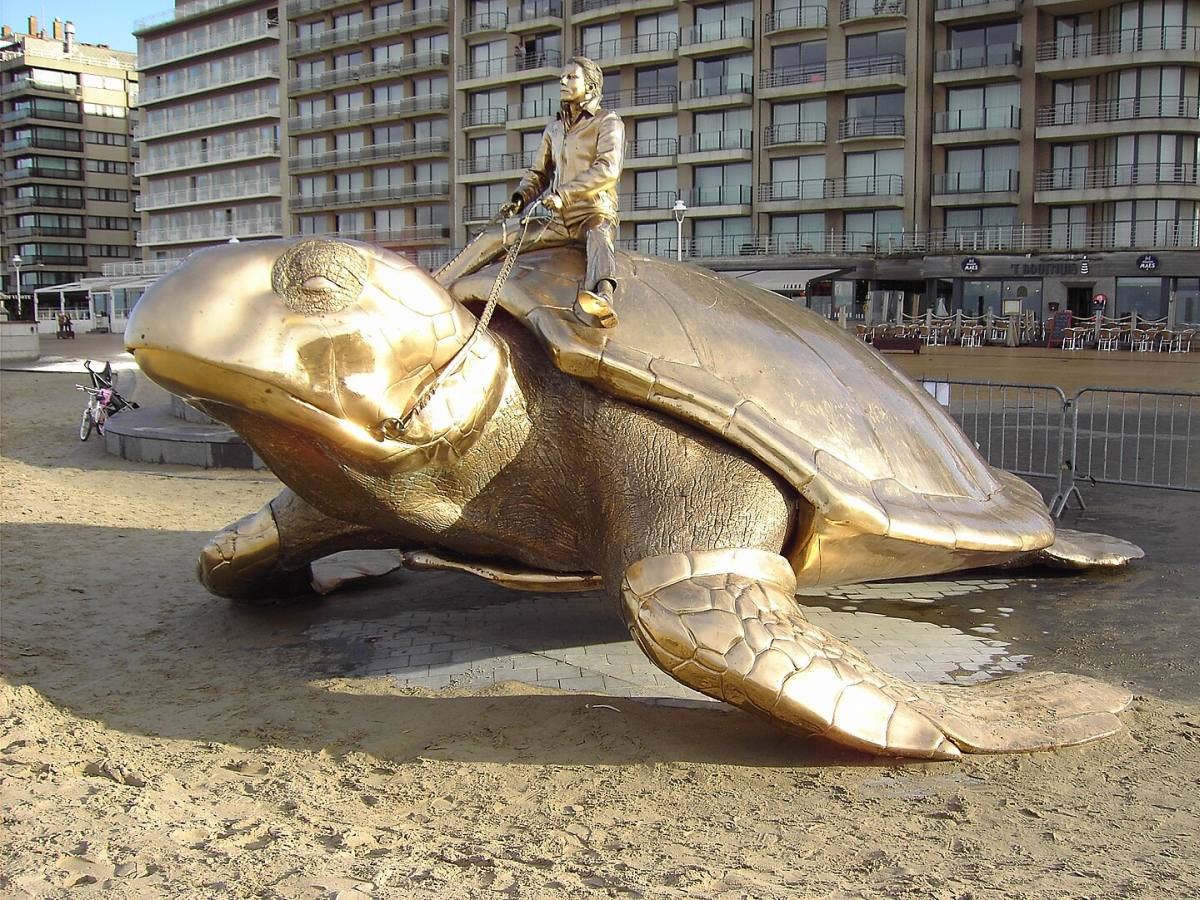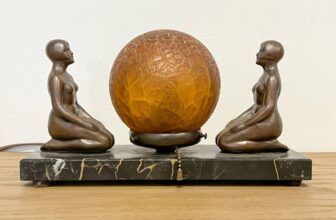
Jan Fabre’s Famous Sculptures
Jan Fabre is one of Belgium’s most daring and multidisciplinary contemporary artists, straddling the worlds of sculpture, theatre, performance, and visual art with equal ease. His sculptures are not merely objects of beauty or contemplation , they are visceral encounters with ideas of mortality, transformation, and the strange elegance hidden in nature and human experience. From monumental bronze works to intricate pieces adorned with beetle wing cases, Fabre’s art is an alchemy of the precious, the unsettling, and the deeply symbolic.
In this comprehensive exploration, we’ll look at what Jan Fabre is most famous for, the stories behind his most acclaimed sculptures, how he creates them, their market value, and where collectors and art lovers can experience them in person.
Who is Jan Fabre and What Is He Known For?
Jan Fabre (born 1958, Antwerp, Belgium) is widely recognized for his multidisciplinary approach to art. He is equally at home writing plays, directing avant-garde performances, and crafting intricate, often monumental sculptures. His work often challenges conventional boundaries , not just in art, but in moral and aesthetic comfort zones.
Fabre’s name is synonymous with:
Use of Unusual Materials: Particularly the iridescent wing cases of jewel beetles, bones, blood, and taxidermy.
Themes of Metamorphosis: Influenced by his fascination with nature, science, and the animal kingdom.
Symbolism of the Warrior and the Thinker: His sculptures often merge human figures with armor, helmets, or other elements that evoke the duality of intellect and conflict.
Integration of Theatre and Sculpture: Many of his visual works carry the drama, staging, and tension of his performances.
His art balances between beauty and discomfort , a reflection of life’s own contradictions.
Over his decades-long career, Fabre has created numerous iconic sculptures. Here are some of his most notable:
1. The Man Who Measures the Clouds (L’Homme Qui Mesure les Nuages)
Perhaps his most celebrated sculpture, this work features a human figure standing on a high pedestal, arms outstretched, measuring the sky with a ruler. Inspired by the last words of his brother, a scientist, the piece reflects the human desire to reach for the impossible and to quantify the unquantifiable.
Themes: Ambition, aspiration, human limitation, poetic absurdity.
Notable Locations: Permanent installations can be found in Ghent (SMAK Museum), Brussels Airport, and collections worldwide.
2. The Man Who Gives a Light
A life-sized bronze figure holding a lighter to the sky , seemingly offering a flame to the heavens. Like much of Fabre’s work, it’s both humorous and profound, exploring ritual, offering, and human interaction with the intangible.
Themes: Ritual, absurdity, spiritual offering.
Notable Locations: Public art installations in Europe.
3. Searching for Utopia
A massive bronze sculpture of a turtle with a man (modeled on Fabre himself) riding its back. First unveiled at the 2003 Venice Biennale, this work has become an emblem of his career.
Themes: Patience, persistence, humanity’s relationship with nature, self-portraiture.
Notable Locations: Middelkerke, Belgium; Nieuwpoort, Belgium.
4. The Man Who Writes on Water
A contemplative bronze of a figure seemingly engaged in an impossible act , writing on the surface of water. A metaphor for futility, poetry, and the ephemeral nature of human endeavors.
Themes: Transience, artistic futility, the beauty of impossibility.
Notable Locations: Museum and private collections in Europe.
5. Scarabs and Beetle Wing Sculptures
Fabre’s use of jewel beetle wing cases is legendary. These works shimmer in green-blue iridescence and range from shields and skulls to entire room installations.
Themes: Transformation, death and rebirth, natural beauty, sacred objects.
Notable Locations: Royal Palace of Brussels (ceiling of the Hall of Mirrors), international museum collections.
6. Totem
A giant gilded needle piercing a scarab beetle, installed in Leuven, Belgium. The work merges monumental scale with Fabre’s insect motifs.
Themes: Science, myth, fragility, human domination over nature.
Location: Ladeuzeplein, Leuven, Belgium.
7. Heaven of Delight
Though not strictly a free-standing sculpture, this ceiling installation in the Royal Palace of Brussels is one of Fabre’s most famous permanent works. Composed of over 1.4 million jewel beetle wing cases, it transforms the ceiling into a shimmering, organic cosmos.
Themes: Opulence, natural wonder, transformation.
Location: Hall of Mirrors, Royal Palace, Brussels.
How Jan Fabre Makes His Sculptures
Fabre’s sculptural process combines traditional craftsmanship with experimental materials and techniques. His methods vary depending on the project, but the following elements are recurrent:
Conceptual Research
Fabre is deeply inspired by nature, anatomy, and the history of art.
He often researches animals, insects, and scientific specimens.
His concepts are rooted in symbolic narratives or philosophical questions.
Material Selection
Bronze Casting: Many of his life-sized and monumental figures are cast in bronze using the lost-wax method.
Beetle Wing Cases: He sources jewel beetle wings from Thailand and other regions, where they are a by-product of the food industry.
Taxidermy: In some works, Fabre incorporates preserved animals, linking to themes of death and immortality.
Gold Leaf & Precious Metals: Used to enhance symbolic and visual richness.
Collaboration with Skilled Artisans
Foundries, carpenters, and artisans execute parts of the fabrication under his guidance.
The beetle wing works involve meticulous hand application, often taking years for large surfaces.
Physical Labor & Scale
Large sculptures like Searching for Utopia require structural engineering, especially for public installations.
The works often combine fragile decorative surfaces with solid metal armatures.
Symbolic and Performative Layer
Fabre often treats sculpture as an extension of his theatre , staging the piece in a particular space to heighten its impact.
The Market Value of Jan Fabre’s Sculptures
The worth of a Jan Fabre sculpture depends on several factors: size, materials, uniqueness, and provenance. His work commands significant prices in the global art market.
Small to Medium Bronze Sculptures: Can range from €50,000 to €300,000 depending on edition size and rarity.
Monumental Outdoor Works: Prices often start at €500,000 and can exceed €1.5 million for iconic pieces like Searching for Utopia.
Beetle Wing Case Works: Depending on complexity, prices can range from €100,000 to over €1 million, particularly for large-scale or historically significant pieces.
Record Auction Prices: His works have sold in major auction houses such as Christie’s and Sotheby’s, reflecting international demand.
Fabre’s reputation and controversy occasionally influence market perception, but his most emblematic sculptures retain high collector interest.
Where to See Jan Fabre’s Sculptures
Fabre’s sculptures are dispersed worldwide , in public squares, museums, and private collections. Some key locations include:
Belgium
Royal Palace of Brussels – Heaven of Delight ceiling.
Leuven (Ladeuzeplein) – Totem.
Nieuwpoort & Middelkerke – Searching for Utopia turtle sculptures.
SMAK Museum, Ghent – The Man Who Measures the Clouds.
International Locations
Venice, Italy – Searching for Utopia was first shown here during the Biennale.
Brussels Airport – Large-scale version of The Man Who Measures the Clouds.
Antwerp, Belgium – Multiple works in public spaces and museums.
Private Collections – Many beetle wing and bronze works are in private hands, occasionally on loan to exhibitions.
Exhibitions
Fabre’s work has been featured in the Venice Biennale, Louvre (Paris), Hermitage (St. Petersburg), and Kunsthaus (Bregenz), among others. Traveling retrospectives often bring together decades of his sculptures, allowing audiences to see the evolution of his materials and ideas.
Interpreting Fabre: Why His Sculptures Matter
Jan Fabre’s sculptures are not simply objects , they are encounters with questions. They ask:
Can beauty and death coexist in the same form?
Is ambition noble or absurd when aimed at the impossible?
How does the natural world’s fragility reflect our own?
By using materials like beetle wings , which are delicate yet nearly eternal in their preserved state , Fabre blurs the boundary between the ephemeral and the everlasting. His bronze warriors, riders, and dreamers remind us that human aspiration is as monumental as it is vulnerable.
His recurring use of self-portraiture also injects a personal mythos into his oeuvre , he becomes the turtle rider, the cloud measurer, the light-giver. In doing so, he inserts himself into a timeless conversation between artist, viewer, and subject.
Controversy and Context
While this article focuses on Fabre’s artistic output, it’s worth noting that his career has also been shadowed by controversy, particularly allegations regarding his theatre practice. These have sparked debates about the separation (or inseparability) of art and artist. For many, his sculptures still stand as significant cultural works regardless of the surrounding disputes.
Jan Fabre’s Legacy of Provocative Beauty
Jan Fabre’s sculptures are as much about the invisible , dreams, ambitions, mortality , as they are about the visible form. Whether it’s a gleaming turtle under the Belgian sun, a bronze man reaching for the clouds, or a ceiling transformed into a jeweled sky, his work invites viewers into a world where nature, myth, and human striving collide.
For collectors, owning a Fabre piece means possessing an object that is both material and philosophical. For the public, encountering his work in a square or museum is a chance to reflect on the strange, beautiful, and sometimes unsettling truths of existence.
His art doesn’t whisper; it stands boldly in bronze, beetle wings, and gold leaf, asking us to look harder , and measure not just the clouds, but ourselves.




